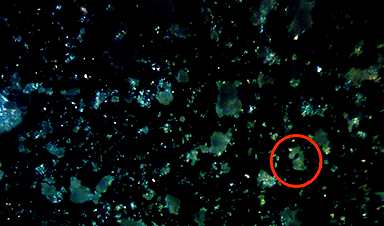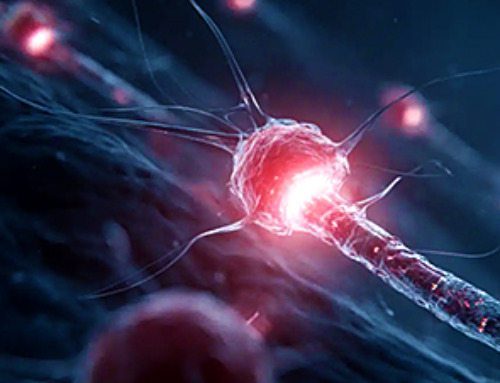The same unique structure that makes plastic so versatile also makes it susceptible to breaking down into harmful micro- and nanoscale particles.
The world is saturated with trillions of microscopic and nanoscopic plastic particles, some smaller than a virus, making them small enough to interfere with cellular function and even alter DNA. Researchers have found these particles in nearly every environment they’ve studied, from Antarctic snow to human blood.
In a new study, scientists have mapped out the molecular mechanisms behind the widespread formation of these tiny plastic fragments. Since plastic first entered the market 75 years ago, its use has become nearly universal—and so has the presence of nanoplastics.
The same properties that make plastic durable and flexible also make it susceptible to breaking down into nanoscale pieces. This breakdown is especially common in the 75-80% of plastics classified as semicrystalline polymers. The research was led by Sanat Kumar, Michael Bykhovsky, and Charo Gonzalez-Bykhovsky, professors of Chemical Engineering at Columbia Engineering.
If you look at a piece of plastic through a powerful microscope, you’ll see alternating layers of hard material and soft material. In the hard layers, plastic molecules are rigidly organized in strong crystal structures. In the soft layers, the molecules lack structure and form a soft, amorphous mass.
When thousands of these layers are stacked together, they create a material that’s lightweight, durable, and extremely versatile. Importantly these materials derive their unique properties through the connectivity between the soft and hard phases.
In a paper published March 28 in Nature Communications, the researchers explain how nanoplastics form. They discovered that the process begins in the soft layers, which grow weaker over time due to environmental degradation and can break off even when the plastic is not under stress. By themselves, these soft pieces break down quickly in the environment. Problems arise when the failure of a soft layer allows hard layers to break off. These crystalline fragments are the nano- and microplastics that can persist in the environment for centuries and cause significant damage in living things, including humans.
We sat down with Kumar to learn more about this work.
How does this paper contribute to our understanding of nanoplastics?
There is a lot of anecdotal evidence of nanoplastics — people have found them all over the place and seen them form — but no one had determined the mechanisms behind how they form.
What did you discover?
75% of all plastic used has sort of a brick-and-mortar structure. It’s made of really thin alternating layers: hard, soft, hard, soft, and so on. We’ve known since the 1950s that the soft stuff is holding the hard stuff together.
What we show in the new study is how easily those soft connectors break even under quiescent conditions such as in a landfill. Once that layer fails, the hard segments have nowhere to go — they scatter into the environment.
Why is that a problem?
These pieces float around, and some end up in human bodies. The smallest pieces pass through cells and into the nucleus, where they can start messing with DNA. Nano- and microplastics, which seem to have similar sizes and shapes to asbestos, raise the potential that they could cause cancer, heart disease/stroke, and other diseases.
Is there an engineering solution to address this problem?
Our results suggest that engineering the architecture of the soft layers to be more resilient would decrease the amount of crystalline fragments that break off.
Clearly, focus needs to be placed on this point to reduce the amount of micro and nano plastics created by normal polymer degradation.
How can better understanding nanoplastics improve human health?
Only 2% of plastics are recycled, mostly because it’s too expensive. But if you just throw plastic into the environment, it creates micro- and nanoplastics that look like they are going to cause health problems.
If you think about it that way, if you have to choose between the health problems that could be created by the nanoplastics vs. the cost of recycling, then maybe it’s actually cheaper to recycle.
Reference: “Mechanism of quiescent nanoplastic formation from semicrystalline polymers” by Nicholas F. Mendez, Vivek Sharma, Michele Valsecchi, Vighnesh Pai, Johnny K. Lee, Linda S. Schadler, Alejandro J. Müller, Shelby Watson-Sanders, Mark Dadmun, Guruswamy Kumaraswamy and Sanat K. Kumar, 28 March 2025, Nature Communications.
DOI: 10.1038/s41467-025-58233-3
The study was funded by the U.S. National Science Foundation and the Basque Government.
News
Drug-Coated Neural Implants Reduce Immune Rejection
Summary: A new study shows that coating neural prosthetic implants with the anti-inflammatory drug dexamethasone helps reduce the body’s immune response and scar tissue formation. This strategy enhances the long-term performance and stability of electrodes [...]
Scientists discover cancer-fighting bacteria that ‘soak up’ forever chemicals in the body
A family of healthy bacteria may help 'soak up' toxic forever chemicals in the body, warding off their cancerous effects. Forever chemicals, also known as PFAS (per- and polyfluoroalkyl substances), are toxic chemicals that [...]
Johns Hopkins Researchers Uncover a New Way To Kill Cancer Cells
A new study reveals that blocking ribosomal RNA production rewires cancer cell behavior and could help treat genetically unstable tumors. Researchers at the Johns Hopkins Kimmel Cancer Center and the Department of Radiation Oncology and Molecular [...]
AI matches doctors in mapping lung tumors for radiation therapy
In radiation therapy, precision can save lives. Oncologists must carefully map the size and location of a tumor before delivering high-dose radiation to destroy cancer cells while sparing healthy tissue. But this process, called [...]
Scientists Finally “See” Key Protein That Controls Inflammation
Researchers used advanced microscopy to uncover important protein structures. For the first time, two important protein structures in the human body are being visualized, thanks in part to cutting-edge technology at the University of [...]
AI tool detects 9 types of dementia from a single brain scan
Mayo Clinic researchers have developed a new artificial intelligence (AI) tool that helps clinicians identify brain activity patterns linked to nine types of dementia, including Alzheimer's disease, using a single, widely available scan—a transformative [...]
Is plastic packaging putting more than just food on your plate?
New research reveals that common food packaging and utensils can shed microscopic plastics into our food, prompting urgent calls for stricter testing and updated regulations to protect public health. Beyond microplastics: The analysis intentionally [...]
Aging Spreads Through the Bloodstream
Summary: New research reveals that aging isn’t just a local cellular process—it can spread throughout the body via the bloodstream. A redox-sensitive protein called ReHMGB1, secreted by senescent cells, was found to trigger aging features [...]
AI and nanomedicine find rare biomarkers for prostrate cancer and atherosclerosis
Imagine a stadium packed with 75,000 fans, all wearing green and white jerseys—except one person in a solid green shirt. Finding that person would be tough. That's how hard it is for scientists to [...]
Are Pesticides Breeding the Next Pandemic? Experts Warn of Fungal Superbugs
Fungicides used in agriculture have been linked to an increase in resistance to antifungal drugs in both humans and animals. Fungal infections are on the rise, and two UC Davis infectious disease experts, Dr. George Thompson [...]
Scientists Crack the 500-Million-Year-Old Code That Controls Your Immune System
A collaborative team from Penn Medicine and Penn Engineering has uncovered the mathematical principles behind a 500-million-year-old protein network that determines whether foreign materials are recognized as friend or foe. How does your body [...]
Team discovers how tiny parts of cells stay organized, new insights for blocking cancer growth
A team of international researchers led by scientists at City of Hope provides the most thorough account yet of an elusive target for cancer treatment. Published in Science Advances, the study suggests a complex signaling [...]
Nanomaterials in Ophthalmology: A Review
Eye diseases are becoming more common. In 2020, over 250 million people had mild vision problems, and 295 million experienced moderate to severe ocular conditions. In response, researchers are turning to nanotechnology and nanomaterials—tools that are transforming [...]
Natural Plant Extract Removes up to 90% of Microplastics From Water
Researchers found that natural polymers derived from okra and fenugreek are highly effective at removing microplastics from water. The same sticky substances that make okra slimy and give fenugreek its gel-like texture could help [...]
Instant coffee may damage your eyes, genetic study finds
A new genetic study shows that just one extra cup of instant coffee a day could significantly increase your risk of developing dry AMD, shedding fresh light on how our daily beverage choices may [...]
Nanoneedle patch offers painless alternative to traditional cancer biopsies
A patch containing tens of millions of microscopic nanoneedles could soon replace traditional biopsies, scientists have found. The patch offers a painless and less invasive alternative for millions of patients worldwide who undergo biopsies [...]





















